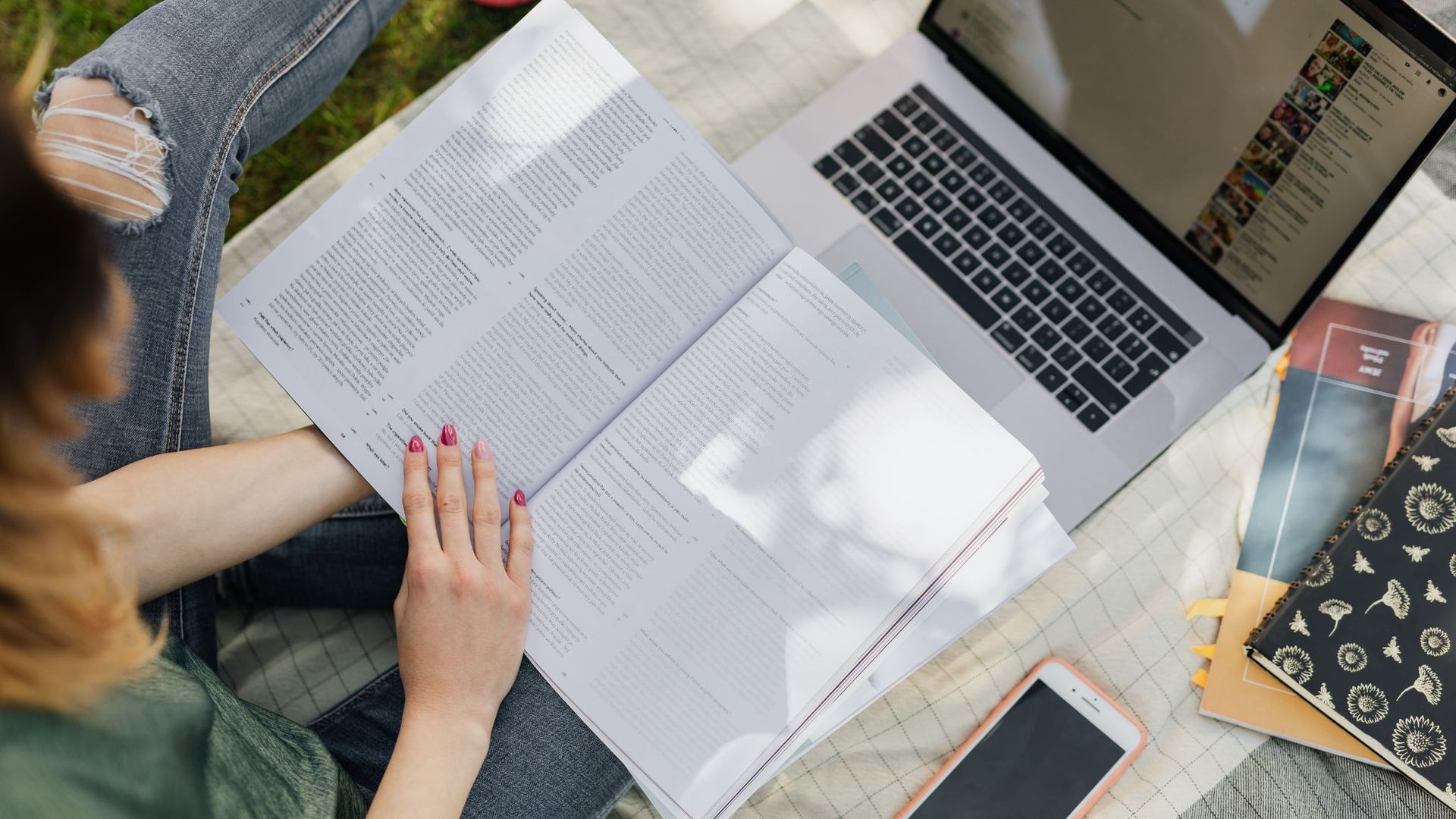A Practical Guide for Students: How to Build a Resume and Find a Job
We know, we know. Getting a job as a student can feel overwhelming and confusing. You may not know what to include in your resume, how to describe your experience, or where to even look for job openings.
It’s easy to feel behind when others seem to have it figured out, right?
But here’s the truth: most students are in the same place. You don’t need a perfect resume or tons of experience to get started. You just need a clear plan, a few useful tools, and the confidence to take the first step.
In this guide, you’ll learn how to build a strong student resume, search for the right kind of jobs, use tools like ChatGPT to save time, and make the most out of any work experience you get..If you’ve been unsure what to do next, this will give you a solid path forward.
Why Get a Job as a Student?
Getting a job while you're still in school might feel like a big step, but it can help you in more ways than one.
You learn real-world skills
Working with customers, handling tasks, solving problems, and even managing time are skills you can’t fully learn in a classroom. These will help you now and later in life.
You find out what you like—and what you don’t
You might discover that you enjoy working with people, or that you prefer quieter tasks behind the scenes. Every job helps you learn more about yourself.
It looks great on college applications
Colleges don’t just look at grades. They want to know how you spend your time, what responsibilities you’ve taken on, and how you’ve grown. A job shows you’re motivated and responsible.
You earn and manage your own money
Getting paid for your work gives you a sense of independence. You’ll also start learning how to budget, save, and spend wisely.
You build confidence
Facing challenges at work, learning how to handle tough situations, and getting feedback will help you grow. Even when things go wrong, you’ll learn to keep going—and that’s a valuable skill.
What You Need Before You Apply
Before you start applying, there are a few important things to check:
Know the rules about work permits
If you’re under 18, you’ll likely need a work permit before you can be hired. This is a legal requirement for most students in the U.S. Schools or district offices usually handle this process.
How to get your permit signed
Y
ou’ll need to fill out a permit application, get your parent or guardian to sign it, and have your employer sign it too. Then, turn it in to your school counselor. If school is out for break, your local district office can usually help.
Be careful with personal information
If you use tools like ChatGPT to help with your resume, don’t include your full name, address, or anything else that can identify you. Stick to sharing general info like your grades, the activities you’ve done, and what job you’re applying for.
How to Build a Resume as a Student: 9 Tips to Know
You don’t need a long list of jobs to make a great resume. What matters most is how clearly you show your strengths and experiences. Here’s how to build a strong resume that works for your first job:
1. Use a clean, easy-to-read format
Pick a simple layout with clear headings. Use basic fonts like Arial or Calibri. No fancy colors or designs, keep it professional and neat.
2. Start with your education
Since you’re still in school, your education should go at the top. Include your school name, expected graduation year, GPA (if you want to), and any honors or awards you’ve earned.
3. Add your activities and experience
Think about everything you’ve done: volunteering, clubs, sports, school projects, or helping out at home. These all count. Write short bullet points to describe what you did.
4. Use strong action words
Start each bullet point with a verb like led, created, organized, helped, or managed. It makes your role sound clear and confident.
5. Show results with numbers
If you can, include numbers to show your impact. For example:
- Helped serve 50 families during the holiday food drive
- Managed a club budget of $500 for the school year
6. Be honest
Only include things you’ve really done. It’s okay if your resume is short. What matters is that it’s real and accurate.
7. Keep it to one page
Your resume should be one page long. Keep it focused. You can always create another version later for different jobs.
8. Include your soft skills and key strengths
If you’ve worked with a team, helped lead a group, stayed organized, or learned to manage your time, say so. These are called "transferable skills" and they matter to employers.
9. Make sure your contact info is professional
Use a simple email address with your name, not something silly. Double-check that your phone number and email are correct.
Tip: You can use ChatGPT to help write your resume. Give it a list of your activities, skills, and school details, and ask it to build a draft in a simple format. Just don’t include your real name, address, or personal info in the prompt.
How to Use an Activity Tracker
Keeping track of what you’ve done outside the classroom is just as important as keeping up with your grades. An activity tracker helps you organize everything in one place.
What to include
List all your extracurriculars, volunteer work, school clubs, sports, and any leadership roles. You can also include things like part-time jobs, family responsibilities, or personal projects.
Why it matters
When it’s time to build your resume or apply for a program, you won’t have to dig through your memory. You’ll already have everything written down.
How to track your hours
For each activity, write down how many hours you spent on it each week and how many weeks per year you did it. This helps show your commitment and time management.
Here’s a simple example:
- Soccer Team - 10 hours per week, 20 weeks per year
- Volunteered at local shelter - 3 hours per week, 10 weeks per year
- Robotics Club - 2 hours per week, 15 weeks per year
Update your tracker regularly. You’ll thank yourself later!
How to Tailor Your Resume for Each Job
One resume doesn’t fit every job. You need to adjust it depending on what the employer is looking for.
Start with a full version
Make a resume that includes everything, such as your school info, skills, awards, activities, and any work or volunteer experience.
Use AI tools to save time
When you find a job you want to apply for, copy the job description and paste it into a tool like ChatGPT. Then add your resume content and ask for a version that fits that job. Example prompt:
"Here’s my resume and here’s the job description. Can you tailor this resume to match what they’re asking for?"
Always check the output
AI tools can be helpful, but you still need to read everything. Make sure the facts are right and the resume sounds like you.
Focus on what matters
Put the most relevant experience at the top. Use keywords from the job posting and adjust your bullet points to match what the job needs.
Where to Find Student Job Opportunities
Knowing where to look makes job hunting a lot easier.
Start with school resources
Many schools or organizations share job boards or Google Sheets with local job listings. These often include places that are open to hiring students and may not post online.
Use job websites with filters
Websites like Indeed let you search for part-time, seasonal, or student jobs. Type in keywords like "high school student," "summer job," or "part-time." Then filter by location, hours, and experience level.
Apply early
Some jobs get posted in May, but others don’t show up until late May or June. Keep checking each week, especially as the school year ends.
Look local
Think about nearby stores, camps, libraries, summer programs, restaurants, and theaters. Many of them don’t list jobs online, but they may be hiring, so it’s okay to walk in and ask.
How to Prepare for a Job Interview
Once you get a call or email for an interview, it’s time to get ready. You don’t need to be perfect, you just need to show you’re interested and ready to learn. Here are some things to keep in mind:
1. Practice a short intro
Be ready to describe yourself in about 30 seconds. Say your name, your grade, and what you’ve done that relates to the job. End with why you’re excited about the role.
Example:
"Hi, I’m Jordan. I’m a junior at Jefferson High, and I’ve helped run the school store for the past year. I’ve always liked working with people, and I’d love a chance to keep learning through this job."
2. Know why you want the job
Think about what interests you. Do you want to work with people? Learn a new skill? Earn money? Be ready to explain what you hope to gain from the experience.
3. Ask good questions
When they ask, "Do you have any questions?" say yes. This gives the impression that you are truly interested to get the job. You can ask things like:
- What does a typical day look like?
- What do you enjoy about working here?
- What would I be doing in this role?
4. Be present and professional
Smile. Make eye contact. Listen closely. These small things show you care and help you stand out.
5. If you can, apply in person
Bring a printed copy of your resume and visit the place you want to work. A face-to-face hello can go a long way, and some jobs are given to students who show up and just ask.
Get Ready to Land Your First Job With Confidence
Finding your first job as a student doesn’t have to be confusing. With the right tools, a strong resume, and a little support, you can take real steps toward independence, growth, and success.
At StrivePath, we help students like you build resumes, practice interviews, and find opportunities that match your goals and interests. If you’re feeling unsure or overwhelmed, we’re here to guide you, step by step.
Need help getting started?
Book a call with us and let us turn your goals into action and make your first job experience one to be proud of.










